But 50 years ago the doors closed as the owners sought permission to demolish the 1894 building.
The youngsters (the under 50s) may be surprised to hear that an eight-year fight to save and reopen the Grand led to our new King, Charles III, formally reopening it on Friday, May 29, 1981.
Prince Charles, as he then was, unveiled a plaque in the theatre foyer before attending a Royal Performance that starred Petula Clark and included many Blackpool and Fylde performers.
They included The Taverners folk group, vocalists Jan Currey and John Lawrenson, comedian Lennie Bennett (former Gazette reporter Michael Berry) and Ray Cornell and his Dancers.
After the show the Prince met members of the Grand Theatre Trust and Friends of the Grand.
If this article plants an idea for a dramatic play by a budding local writer, then fine. Retro retrieves the story from a nine-year span of Gazettes beginning in September, 1972, when three feature articles laid out the battleground.
The prologue was one morning in August when yours truly paused to read a type-written notice on the theatre door.
The owners, the Blackpool Tower Company, part of the EMI empire, were applying for permission to demolish the Grand. Permission was necessary because the theatre had been made a Listed Building, Grade Two, a few months earlier, for it's architectural merit.
It was a shock to both the owners and the borough council. The closure of the resort's Palace theatre-cinema-ballroom in 1961 and the closure of the Queen's Theatre in 1971 had not, apparently, been of much concern.
Neither party could see that, at that time, the loss of one more theatre could have been curtains for a show town.
And it's fair to say that without the Grand and its history the Showtown title of our soon-to-open Museum of Entertainment wouldn't have the same clout.
But let's return to the autumn of 1972. The story opens on the steps of the Grand, where Burt Briggs, treasurer of the Blackpool Operatic Players, headed a group of supporters from other local amateur companies.
They were seeking signatures on a petition that would, hopefully, persuade the Minister for the Environment to call a local enquiry. There was a flutter of action as a north west TV news team arrived.
Your intrepid reporter was called to the Gazette boardroom, where editor-in-chief Sir Harold Grime was reviewing the situation.
He was a director of the Tower Company and explained the Grand needed much work and had a suspect roof.
"Mr Band (bosses were very formal in those days) this Grand Theatre business is getting out of hand. We are going to run a series of articles in which you will give the opinions of all interested parties.
"There is only one condition. You will begin with Dr Badman and Mr Gledhill."
Dr Edward Badman was chairman of the Blackpool Tower Company, owners of the Grand, and Mr Donald Gledhill was the general manager.
Many phone calls and much hammering of a sturdy Underwood typewriter, produced three articles that were published in the week prior to the deadline for objections to be lodged against the proposed demolition. The articles were tagged The Grand Dilemma
To summarize the situation, the Tower Company wanted to sell the site of the Grand, which had become a seasonal venue because of poor winter business.
The only possible buyers, the borough council, had never had to financially support the resort's theatres and didn't intend to start.
"The road is littered with civic theatres that lose money," declared council leader Leonard Broughton.
To the surprise of the council and the Tower Company the Minister for the Environment "called in" the case and a local enquiry was scheduled for April, 1973.
On a Sunday in February, 1973, at the Imperial Hotel, the Friends of the Grand came into being with the aim of contesting the Tower Company/EMI wish to redevelop the site.
The Friends' joint chairmen were Burt Briggs and barrister John Hodgson and the secretary was solicitor Samuel G. Lee.
It was Sam who did all the prepatory legal work but it was committee member Marjorie Higham who had the ace card. She had been a teacher at Arnold School, Blackpool and one of her old pupils was Peter Boydell QC, one of the country's top planning lawyers.
He agreed to lead the Friends' case without fee and at the five-day hearing he, effectively, dismantled the Tower/EMI arguments.
There was one particular moment when the theatre owners' case went out of the window.
Their legal team said the Tower Company had closed the Grand because of its isolated position, to which Mr Boydell quipped: "Isolated between the Opera House and the Promenade."
The owners and the council were astonished when the planning inspector delivered his verdict on August 15, exactly a year after the closure notice had appeared on the Grand's front door.
The application to demolish the theatre was dismissed.
The Grand was derelict for three years before EMI refurbished it and opened it for bingo, giving the Grand Theatre Trust (the Friends) the chance to purchase it for £250,000 in 1981.
The Trust took possession on October 1 and
volunteers worked through the winter to prepare the Grand for its reopening on March 23, 1981.
The opening show was The Merchant of Venice, starring Timothy West and Prunella Scales and after a two-week visit by the D'Oyly Carte Opera Company came the formal opening by Prince Charles in Friday, May 29, 1981.
Thirteen years later, on July 21, 1994, our late Queen, Elizabeth 11, visited the Grand on the occasion of the centenary of the theatre.
On two other visits to Blackpool, the Queen attended the Royal Variety Performance at the Opera House in 1955 and 2009.
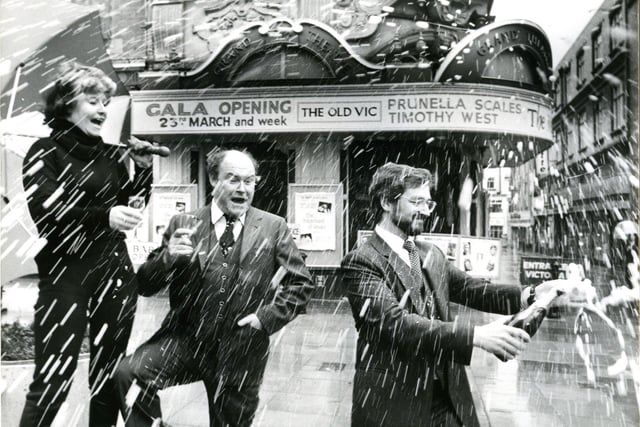
1. wbeg-21-09-22- timothy west and prunells scales grand (1).JPG-NW
Prunella Scales and Timothy West at the re-opening of the Blackpool Grand Theatre. Picture Sent in by Roy Payne Photo: submit
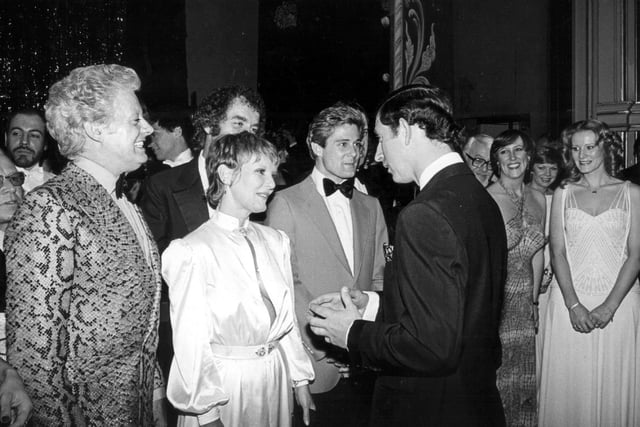
2. PRINCE CHARLES met the stars of the show. Behind Petula Clark is Blackpool comedian Lenny Bennett and on her right Danny La Rue. GRAND THEATRE RE-OPENING 1981 / BLACKPOOL / HISTORICAL
Prince Charles met the stars of the show at the re-opening. Behind Petula Clark is Blackpool comedian Lenny Bennett and on her right Danny La Rue Photo: submit
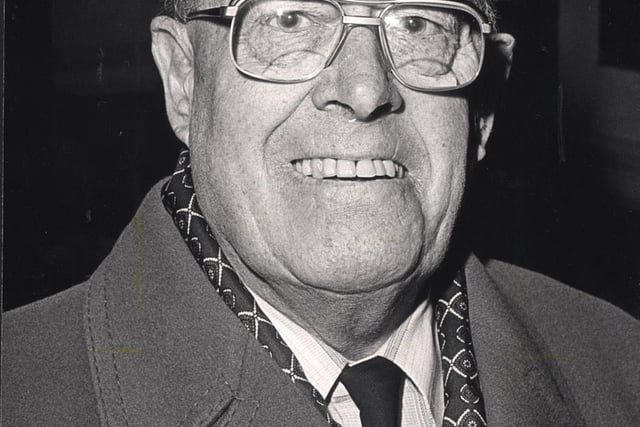
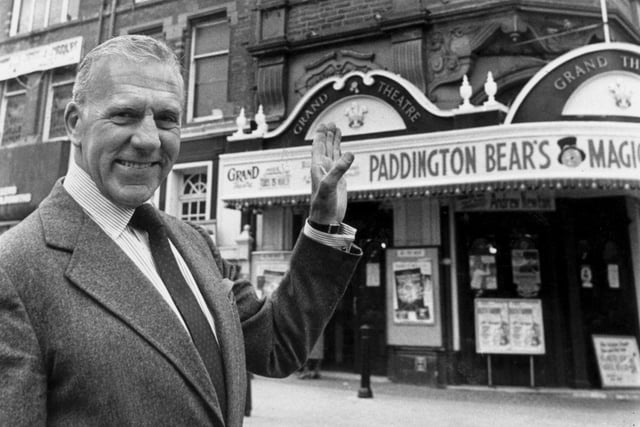
4. Peter Boydell who helped save Blackpool's Grand Theatre from demolition. 1983 picture
Peter Boydell who helped save Blackpool's Grand Theatre from demolition Photo: Submit
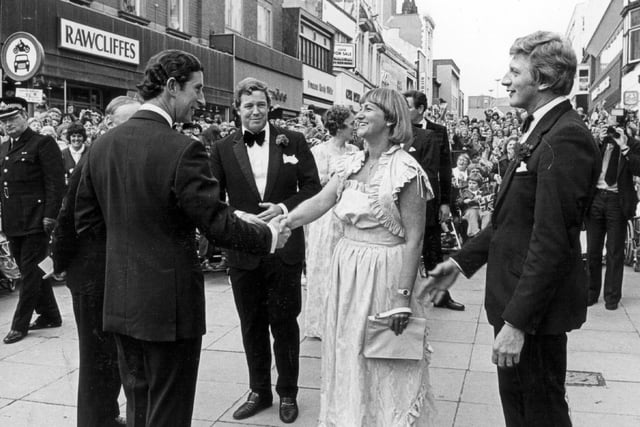
5. fri feat: Arriving at The Grand Theatre blackpool Prince Charles was greeted by Mr & Mrs Geoffrey Thompson and John Broadbent, chairman of Friends of the Grand. re-opening of the grand in 1981.
Arriving at The Grand Theatre in Blackpool, 1981, Prince Charles was greeted by Mr and Mrs Geoffrey Thompson and John Broadbent, chairman of Friends of the Grand. Photo: submit